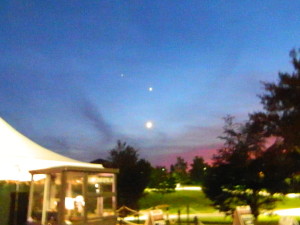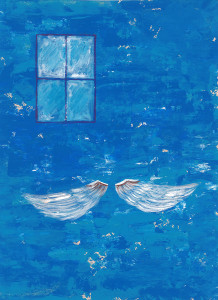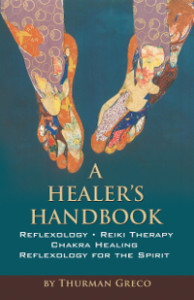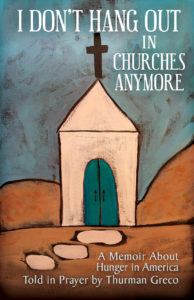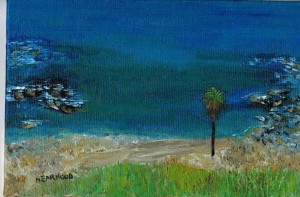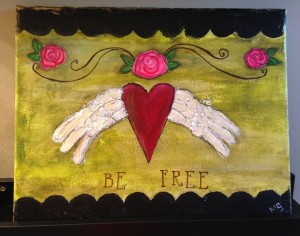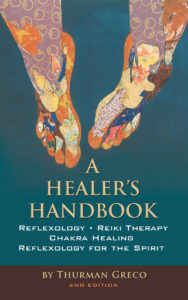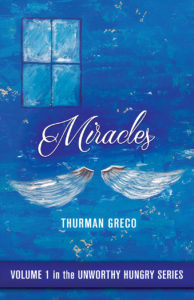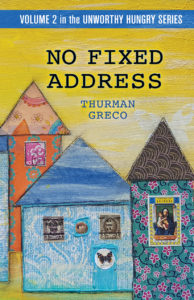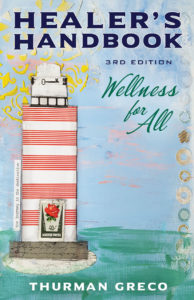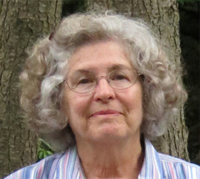Still Can’t Sleep?
Still can’t sleep? It’s turning out to be a cold winter in Woodstock this year. But, still not as cold as one would think. The snow melts between the storms.
All these temperature ups and downs invite insomnia in some people. As many articles as I’ve written about sleep, there are always more tips waiting to find space on the blog post.
Still can’t sleep? Have you changed your pillow? If you find yourself awake at night and slugging it out with your pillow, it’s time to go to a store and find one that’s just right for you. There are so many kinds of pillows out there now that a person can get confused. Don’t give up. Think about the kind of pillow you need. You’ll find it!
Sip some mild tea as you relax yourself before going to bed. Give yourself an hour to slow down your systems, calm your brain and nerves.
Still can’t sleep? Try to eat your last meal of the day about three hours before you go to bed. If you are afraid you’ll be hungry, eat a banana before you go to bed.
Wear ski socks when you go to bed. Studies show that people sleep better if their feet are warm.
Have you moved your office out of your bedroom? If not, now is a good time.
What about your curtains? Heavier curtains block light and encourage sleep.
Finally, if you have read all these blog posts about sleep, and none of the tips seem to work for you…it might be time to try a sleep center and take a sleep test.
Thanks for reading this article.
Please share this article with your preferred social media. network.
I’ll be posting more regularly now that the reflexology book is going into it’s second edition and the hunger book is nearing the end. You’ll be reading about their availability soon!
Thanks.
Thurman Greco
Eight More Tips for a Good Night’s Sleep.
I can blog posts until the end of time and never overestimate the benefits of a good night’s sleep. A healthy night’s rest is one of the most important things a person can do to maintain a youthful appearance and lifestyle.
- Sleep Improves your Memory. As you sleep, your brain organizes your memories for you.
2. Adopt a Sleep Schedule. Try to go to bed and get up at the same time every day. As you work on your sleep schedule, allow yourself eight hours sleep in every 24-hour period. This can be a real help because your body will soon prepare itself to sleep in the evenings when it’s time to go to bed. Your circadian schedule will really help you out here.
3. Make your bedroom dark at night. It’s easier to sleep in a darkened room. The darker you can keep your bedroom at night, the better.
4. Check your meds. There are many meds which can interfere with your normal sleep. Check the meds you’re taking. Change out any meds and/or foods and beverages which might be the culprits.
5. Nothing is more likely to induce sleep than being in the dark. Night time is when we produce melatonin.
There are things we can do to encourage sleepiness. When night approaches, keep your lights down low and avoid overhead lighting. Use dimmer switches on lights and lamps.
While you are enjoying a calming evening in a darkened room, this is a good time to enjoy softened and restful music. Or, this is a good time to do some gentle yoga stretches. Or, this is a time to do some calming breathing. Finally, this is a good time to enjoy the cool stillness of the night air, the stars in the sky, a moonlit night.
But, whatever you do, include darkness as part of your nightly routine.
6. High Blood Pressure? Sleep helps lower blood pressure and elevated stress hormones. Get treatment.
7. Valerian has a reputation for improving sleep quality. Taken properly, this may work for you.
8. Anxiety, Depression, and Tension are three common causes of insomnia. If you think you suffer from one of these, get treatment. Treating your anxiety, depression, or tension may well take care of your insomnia issues.
As you try out these different tips, remember that getting from insomnia to a good night’s sleep is a journey. You’ll find things that work and things that don’t work. And, none of it will work or not work 100% of the time.
Thanks for reading this blog post. Please refer this article to your preferred social media network.
Thanks for reading the book.
Thurman Greco
Continuing Education: Self-Care for You, Reflexologist – 5
Do you attend continuing education classes, workshops, sessions throughout the year? If not, you’re missing out on the most important part of self-care.
Continuing education classes not only teach us new ideas, techniques, attitudes, postures…they stimulate our minds.
Continuing education classes offer emotional and spiritual stimulation.
Continuing education classes offer networking opportunities of a quality not found anywhere else.
Every continuing education experience is reflected in better work on your client partners.
In addition, continuing education classes usually offer a chance to receive and give body work while you’re learning.
You return to your table renewed and rejuvenated.
Continuing education classes offer you a chance to expand your service skills. I am a reflexologist. This is the work I offer my client partners daily.
I am also known for being a companion animal massage therapist, a Reiki master teacher. I have been attuned to nine different forms of Reiki. Finally, I read tarot cards.
I learned all of these skills on continuing education hours.
To be honest, I’ve studied things that I don’t practice but not one minute of the continuing education hours were a bust.
I am a much better practitioner, blogger, writer, teacher because of my fellow professionals who shared their knowledge with me through continuing education classes: Jonathan Rudinger, Penelope Smith, Dawn Hayman, Mary Ruth Van Landingham, Shoshana Hathaway, Tom Rigler, Rev. Dan Chesbro, Kerrith McKechnie, Marge D’Urso, Alberto Villoldo.
So, my message is this: enrich your life, expand your practice, get continuing education hours!
Thanks for reading this blog post.
Please share this article on your preferred social media site.
Thurman Greco
Release Your Clients: Self Care for You, Reflexologist – 4
At the end of each and every day, it’s important to release all the client partners you worked with, spoke with on the phone, booked future appointments for.
Release the person, the session, the issues, into the universe.
Throughout the day, you do what you can for your client partners. At the end of the day, It is time for them each to accept your healing and go back out into the world.
Each person and his/her issues are now separate from you until the next appointment.
Releasing your client partners at the end of each day is important for them as well as for you. For one thing, when a person comes for a session, it’s important that she/he become separate after the session. This separation promotes healing. .
One easy way to release your client partners is to cut the cords at the end of the day. An easy way to do this is to visualize the cords connecting you with your client partners. Now, take a pair of beautiful, golden scissors and snip them.
A second easy way is to offer a releasing meditation at the end of each day you work. You can write a releasing meditation to use just for this purpose.
A third way is to offer a releasing ceremony. To do this, simply write your own ceremony for releasing your clients. To end the ceremony, drape a special closing cloth over your healing table. Leave this ceremonial cloth on the table until you remove it when you return to work the next day.
A fourth way is to find a piece of music which signifies to you an ending. Play this music for a few moments at the end of each work day.
Smudging is also an effective way to end your day.
Essential oils are important also. Suggestions include frankincense, Idaho balsam fir, lavender, myrrh, palo santo, patchouli, and sandalwood.
Reiki is always appropriate for ending your day. A self-reiki session is a meditation in itself. Reiki the space you worked in all day.
So, here you have a selection of options to choose from. Over time, you may vary your releasing techniques. Experiment. Find out what works best for you.
Thank you for reading this reflexology article.
Please refer this blog post to your preferred social media network.
Thurman Greco
Self Care for You, Reflexologist – 3
Reflexologists, body workers, healers, whatever the title…we all have days when the clients seem to be lined up outside the door in an unending line.
OR, one client comes in for an appointment and it turns out to be a challenging day.
So, whether it’s one client or ten..days can be challenging.
What is a reflexologist to do?
One thing I do, no matter what, is take a power break.
A power break manifests itself in many ways:
- A short meditation of two or three minutes can completely change the energy – not only in your space, but in you as well. This meditation can stretch beyond the three minutes if your schedule allows. Do you have even fifteen minutes? Go for it!
- Take a clean air break and step outside for a moment or two. Breathe deeply. Enjoy the day – whatever it is. It doesn’t really matter whether you step out into the most beautiful day of the year or walk out to greet a major storm. The important thing is that you have stepped out of your space into the world for a moment.
- Find a quiet corner, lay down on the floor and prop your feet up the wall. This posture, for two minutes can change your energy dramatically. It can rejuvenate you for the rest of your day.
- Walk around your area for a moment and just do nothing. Walk around aimlessly. This will allow you to empty your head in a way no other activity can.
- Can you nap for two minutes? I’ve learned to do this and it is very refreshing. The ideal nap is fifteen minutes or more but two minutes can go a long way if it’s all you’ve got.
- Give yourself a quick Reiki session. A few minutes of Reiki therapy will offer much rejuvenation.
- Cut the cords. This is easy, quick, and very effective. Whenever you meet with another person, no matter how briefly, you connect on spiritual and emotional levels. When you cut the cords, you sever this connection. This cutting of the cords is important at least at the end of each day. Cutting the cords after each appointment is a positive move. Think of these cords as different colored ribbons attached at each end to you and the other person. Cutting them will offer a release for you which can be freeing.
Whatever you do, choose an activity you can rely on for rejuvenation, relaxation, stress release. Make this power break part of your day, every day.
Thank you for reading this blog post.
Please share this article with your favorite social media network.
Artwork provided by Jennette Nearhood.
Book Cover designed by Sangi.
Reflexology blessings to you!
Thurman Greco
Self-Care for you, Reflexologist – 2
Working a full day is challenging. Only another body worker or healer knows what a day full of appointments means to you, the reflexologist – physically, spiritually, mentally, emotionally.
There are things you can do to minimize the fatigue encountered on just such a day.
One thing you can do that will help immensely is release the appointment when your client partner’s session comes to an end.
What you want is to release the person, the issues, the intention, the time spent to the universe.
When you do this, do not forget to “cut the cords” between you and the person to emphasize that the session is over.
You have done what you can for this person in the time allotted during the session. It’s time now for him/her to accept your healing efforts and return to the world.
Once you release the person, both the your client partner’s body and issues are gone from you until the next appointment.
The whole release may not take but a few moments. A suggestion is that you write a script for release and mentally repeat it as each client partner leaves your table.
If you are a ceremony person, you may write a ceremony of release to practice in your space at the end of each shift. This ceremony may include essential oils, smudging, prayer, Reiki therapy.
This releasing gesture seems easy enough but many people don’t do it. This release makes a difference in your health, your energy, your career.
Whatever you do, it’s important to release each and every client partner who comes to your table.
Thank you for reading this blog.
Please refer this article to your favorite social media network.
Jennette Nearhood provided the artwork for this blog.
Thurman Greco
Self-Care for You, Reflexologist
When you look at your calendar for the coming week…where are YOU on the schedule? If you are not on the schedule, you are not doing the basic self-care things things to protect your career. Self-care is the difference between a two-year career as a healer and a twenty-year career as a healer.
You are the healer. You join the professional organizations. You pay your taxes. You make sure your office is “just right”. You take continuing education classes. In short, you do the things necessary to protect your business.
But, what about you: your body, your spirit, your emotional strength, your thoughts? Where are they lined up here with the bills and the available appointments, and the marketing activities?
For many healers, body workers this is the most difficult thing to do on the entire list. As reflexologists, we’re accustomed to give, give, give. And, we enjoy giving. Obviously we enjoy giving or we would never have taken even the first class.
The bottom line here is that you commit to your own private, inner, personal wellness when you receive a weekly session. You also set an example for your client partners.
Things you can do!:
Begin by filling your spiritual tank. Schedule a session for yourself each week. Every week. Do something. Get a massage. Get a Reiki session. Schedule a session with a shamanic healer. Try out that new chiropractor who just moved into your neighborhood.
Do something! The important thing is to get on someone else’s table at least once a week.
Personally, I receive an hour-long Reiki therapy session every week…no matter what. I also receive a reflexology session every week. The work I do the rest of the week is much better for this hour which I invest in myself.
Thank you for reading this blog.
Please refer this article to your preferred social media network. Share this article with a fellow healer.
Thurman Greco
Forgiveness
In 1513 Juan Ponce de Leon went exploring for the fountain of youth in what is now Florida. He found it and it exists. A branch of it is probably at a fitness center in your community. I found one in my community. It’s called the Fitness Connection and is on Albany Avenue in Kingston, New York.
There is a branch of the Fountain of Youth within reach of you. Can you name one? Do you use one? Regularly?
Being tuned into the Fountain of Youth is important. Don’t ever mistake this. But, it’s also important to be healed. The quality of your life will be much better when you can forgive those who injured you in some way. Forgiveness opens the door to healing.
Without forgiveness, we go through our daily life carrying anger, blame, fear, guilt, hurt, regret, resentment, revenge, sadness.
Getting rid of negative baggage can change your life for the better.
Begin to release this negative baggage by listing the people in your life who you need to forgive. Include yourself in this list if you blame your self for things as well. (Don’t we all?)
Now, spend some time each day forgiving those who need forgiveness. You are forgiving people for yourself…nothing more. You know that when you offer forgiveness, miracles can occur.
Don’t worry about the person anymore. You are releasing this person’s energy into the universe. You are releasing this person’s karmic connection to yourself. You are cutting the cords which have been binding you together.
Healing you never expected will take place.
How does forgiveness happen? How can you make this work for you?
Sit for a few minutes in a quiet place and offer forgiveness to each person individually:
“I offer forgiveness to ………………………….. I forgive you for …………………………………..
Now, I am free and you are free, too. I release you to your divine plan of life. Everything between us is cleared up, now and forever.”
When you have forgiven everyone you can remember, go into your past lives and offer forgiveness to those who need it:
“I offer forgiveness to everyone in my past life who has damaged me in some way. I forgive everyone for whatever he/she did. Now, I am free and you are free, too. I release you now. Everything between us is cleared up, now and forever.”
These forgiveness meditations may take more than a day. Actually, they may take several weeks or even months. Don’t worry about this. Take whatever time is necessary. Forgive a person or few persons each day when you have a few moments.
As you do this, notice how you feel when this happens. Notice how much better you feel with each meditation. Notice how much better you look. Notice how much younger you act. Notice how much excess weight you are losing.
You may not observe any changes immediately. However, you will begin to see yourself, your environment, and your world improved, healed, more beautiful.
As you forgive people and release them to their divine plans…
You will feel better.
Your vocabulary will change.
Your thoughts will be positive.
You will feel free.
You will feel light.
Replace the negativity with love.
Bring love alive in your life.
Eat, sleep, and breathe love.
ENJOY!
Thank you for reading this article. Please share this blog post with your favorite social media network.
Spread the word about “A Healer’s Handbook”! Thank you to everyone who has purchased this book. Thank you to everyone who will purchase this book in the future.
Thank you to Michele Garner for contributing her heart art at the top of this blog.
Thank you to Sangi van den Nouweland for contributing the cover art on “A Healer’s Handbook.”
The information about the Fountain of Youth came from the Fountain of Youth Archeological Park in Saint Augustine, Florida.
Thurman Greco
